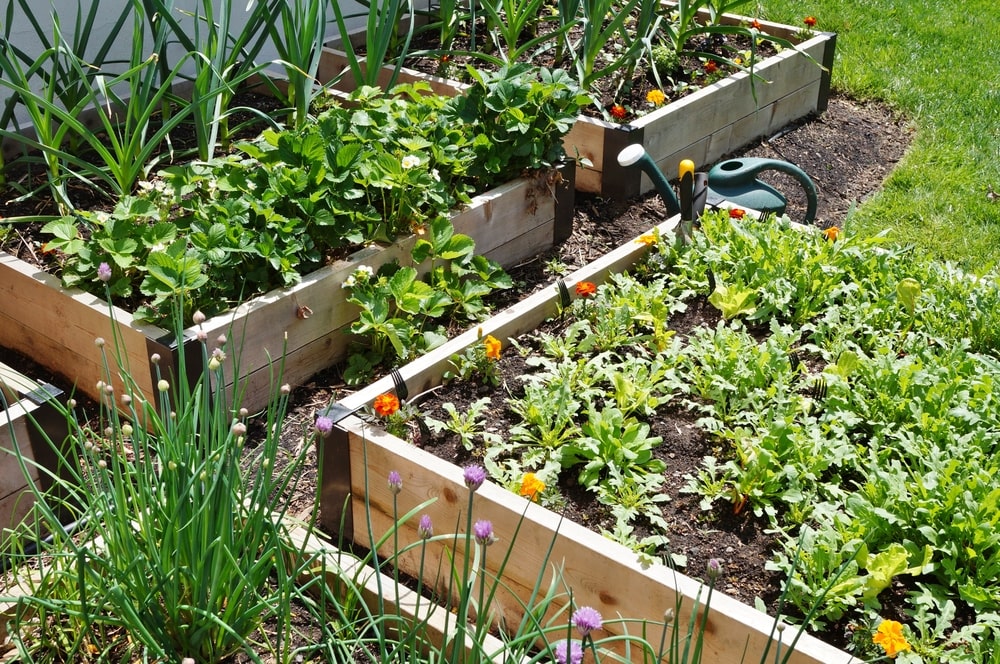Welcome to Virginia—home of red clay, granite chunks, and critter problems—moles, voles, and deer. And yet, it’s home. I’ve lived here my whole life. I’ve learned that there are several things to think about when I plant.
Our Gardening Reality
My yard is the best of Virginia—red clay in the front yard and red clay mixed with granite gravel in the back. I must amend the soil with compost and plant a little shallowly whenever I plant anything in my yard. Red clay isn’t necessarily lousy soil—just lousy draining soil.
Planting a shrub with the top inch or two above the soil surface will allow the soil to settle a little without making a depression around the neck of the plant. This can also help with the aforementioned lousy drainage. When you mulch your shrub, tree, or perennial, do not mulch up to the plant’s trunk or “neck.” Keep it a few inches away for best results.
Moles and Voles and Other Critters – Oh My!
Now for the critter problem—moles and voles. Moles make the tunnels—however, moles are insectivores, feeding on grubs in your soil. Voles are herbivores—they’re the ones eating your plant roots. I’ve had the best results in my yard with a two-fold approach. Voles are lazy diggers. They prefer to let the moles do all the work; then, they use the mole runs to get to your plants.
The Milky Spore Solution
The first thing I do is get rid of the grubs. There is a product called Milky Spore. Milky Spore is a bacteria that attacks Japanese beetle grubs—ONLY. It’s not a poison, won’t kill earthworms or other beneficial insects, and is not harmful to people or pets. Get rid of the food, get rid of the moles.
Remove the moles and half of your vole problem is gone. For the remaining burrowing critters, use a good mole/vole repellent. Most repellents rely on Castor oil. You can use chemical grub controls, but I’m organic and have had great results with Milky Spore—plus, Milky Spore lasts a long time—10 to 20 years.
This works best if neighbors on either side can do it with you. If you can’t, then you’ll probably need to re-apply mole/vole repellents along the edges of your lawn—or include plants voles don’t like as a border plant. I use daffodil bulbs. Not only do I enjoy those flowers in the spring, but even when they’re not blooming, those little poisonous bulbs are sitting underground, just waiting for some little varmint to come along, sniff them, and go elsewhere.
What About Deer?
For deer, there are several things you can try—scarecrows, believe it or not, can work, but the secret is to MOVE THEM AROUND from week to week. If a deer or squirrel sees them in the exact same place every week, they can get used to them and begin to ignore them.
Several repellents can work. Just be sure to follow the label directions. Don’t do more or less than it says.
You can try herbs. Herbs are already one of the ingredients in most repellents. Grow your own. Around the outside of my raised garden bed, I plant herbs, onions, and/or garlic in the fall. Deer will leave my entire raised bed alone.
In the yard, I’ve surrounded plantings with daffodil bulbs. Daffodils are poisonous, and deer know it. When the deer first check around in the spring to see what looks yummy, daffodils are in full bloom, and they leave them alone. Later in the season, when the daffodil foliage finally dies, the deer are so used to staying around from that yard corner that they leave the hostas alone.
Your Garden “Must Haves” Are Waiting at the Great Big Greenhouse
Visit the Great Big Green House for all your gardening needs and expert advice. We are here to help!

